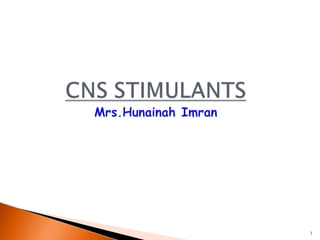Stimulants are substances that increase behavioral activity when administered. They are classified as psychomotor stimulants or hallucinogens. Psychomotor stimulants like cocaine, amphetamines, and nicotine cause excitement, euphoria and increased motor activity by increasing the neurotransmitters dopamine and norepinephrine. Hallucinogens affect thought patterns and mood but have little effect on the brain stem and spinal cord. Common stimulants include caffeine, nicotine, cocaine, amphetamines, and methylphenidate.

































